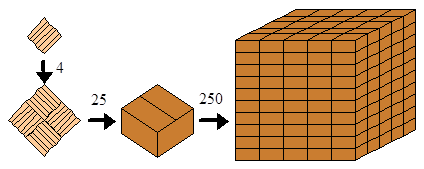One of the common tools of quality assurance is acceptance sampling. Acceptance sampling uses the observed properties of a sample drawn from a lot or batch to make a decision about whether to accept or reject that lot or batch. While the textbooks are full of complex descriptions of various acceptance sampling plans, they never stop to tell you what you know about the lot you have just sampled. How to do this was the topic of part one. Here we shall look at how acceptance sampling plans attempt to describe the quality in the warehouse.
|
ADVERTISEMENT |
The quality in the warehouse
A company making hardwood flooring used the following procedure as its quality assurance plan. After fabricating six-by-six parquet tiles, the tiles were glued together into 12-by-12 squares and boxed 25 squares to a box (figure 1).

Figure 1: Pallets of parquet flooring
…
Comments
Great article, plus a typo
Thank you for spending the last two months writing about acceptance sampling. Very informative articles.
I believe there is a typo in the third paragraph after figure 6. You wrote, "This is the case in figure 2". I think it should say, "This is the case in figure 6".
Thank you Andrew
Now I get it
Thanks for replying. You are right. After reading it a couple of more times I finially got it.
This is an issue I never thought of before
You are right; lots will have two levels of quality, with those of the originally rejected lots being 100% (if inspection is totally efficient), and accepted ones containing defects or nonconformances. The tile issue, of course, raises the additional issue of rolled throughput yield (RTY) in which, if four pieces must be put together, 95% quality becomes 81.5% quality.
Re: "Finally, to use an acceptance sampling plan, you have to simultaneously believe two contradictory things about successive lots: Each lot is uniform, and successive lots are completely different." The switching rules, e.g. from normal to reduced or tightened inspection, do account for the fact that the process' quality might change. In other words, we hope the quality of each incoming lot is uniformly good; if we must reject two out of five, we suspect something is wrong, and go to tightened inspection.
Curious????
Industries still use acceptance sampling and customers are ok with acceptable quality levels? Go figure!!! I thought that way of thinking started dying off in the 1980's. Guess I must be supplying for more demanding customers than others. Hopefully I'm not purchasing any consumer products from those who use AQL's... btw, good article if one had to use it. AQL's are truly misunderstood and I appreciate any light shed on them.
Add new comment